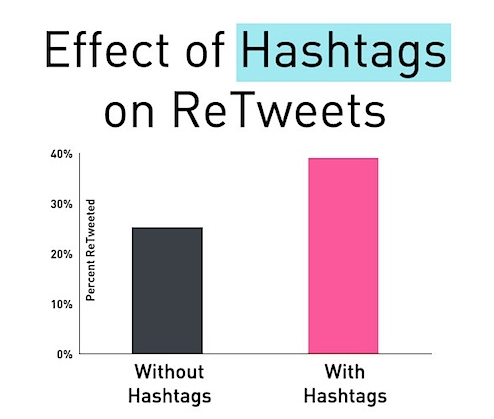- Blog Home
- Content Marketing
- Jd Peterson
- Don't Lose Trust With Misleading Headlines
Don't Lose Trust with Misleading Headlines
As someone who subscribes to almost every content marketing twitter handle, newsletter list, and blog, I often see similar-sounding titles and claims being shared. With so many articles being published more and more frequently it's often hard to find quality posts. Promoting your content is like fishing:
- You need to attract people to your content (bait)
- You need to attract the right people (attract the right fish, know your audience/surroundings)
- Your content needs to provide value or no one will stay (reel in your fish, right equipment, technique)
Making sure your content gets noticed is important, but I believe too many content marketers focus on attracting readers with a headline. When writing a blog post, it's important to keep in mind all three aspects of 'fishing': attract views, find the right audience, and deliver quality content.
1. Attracting Visitors and Traffic
Yes, you need to have a catchy headline. Controversy, alliterations, "vs.", guides, how tos, top 5 lists, etc. are all examples of common headlines that are great click bait. Tips on how to title your blog posts or tweets can be found across many sources. A few best practices are:
Tweets and Retweets (from Dan Zarrella):
- Tweets with Hashtags are 55% more likely to be retweeted
- Tweets with quotations are 30% more likely to be retweeted
- Tweets with pic.twitter image are 94% more likely to be retweeted
Blog Post Titles
- [Number or Trigger word + Adjective + Keyword + Promise]
- Example: Bathing Elephants = "18 Unbelievable Ways You Can Bathe an Elephant Indoors" (GoinsWriter)
- Pique curiosity and excitement (Social Media Today)
- Give a reason to take immediate action (Social Media Today)
- Create a sense of urgency (Heidi Cohen)
- Use a maximum of 70 characters (Heidi Cohen)
2. Attracting the Right Audience
Alright, so you have a lot of clicks on your content and you're driving more traffic than ever. All is good, right? Not quite - who is clicking on your content? Unique visits don't tell the entire story and if that's the metric that you're working towards, you may be putting a lot of effort into the wrong audience.
We'll be talking a lot about how to find the right audience in November (Audience Development Month), but one way is to hear directly from your readers or clients. A simple survey or email can help you understand why your core readers are there in the first place. Build your audience through thoughtful, authentic content, and stay true to your mission.
Alexander Haro, from the surf blog The Inertia, makes a great point about how caring too much about unique visits isn't a good way to steer your content topics. The Inertia published a post that featured a video of surfer Alana Blanchard dancing before her surf heat in a competition. What was depressing to Alexander was that of all the amazing thoughtful content on the website, that one post had the most views of all time. He writes, "I looked at the analytics for this website a few days ago. It was depressing. Not because we're doing badly (we're actually doing better than I could ever hope for), but because apparently, the surfing world cares more about twerking and Alana's butt than well... anything else."
A simple, TMZ-styled controversial video drove the clicks and social shares. What does that mean? Should this surf blog only focus on posting about girls in bikinis and discard interviewing the most famous surfers in the world? Now this is surfing, but how can this relate to your industry? What's the most popular post you've ever posted? How true is it to your core values?
To measure the quality of your audience, set up goals in Google Analytics to see who is looking at more than one page on your blog. What are the bounce rates for different types of content and different channels? Who is commenting and what articles are they commenting on?
3. Content with No Value
The worst thing you can do with your headline is over sell or over promise. Consistently publishing content that doesn't provide value for your readers will dilute your brand and audience. The core of content marketing is to create trust with your readers and potential clients. Not every piece of content on your blog or website needs to be groundbreaking or full of case studies, but make sure you deliver what you promise.
I'm sure there are plenty of examples floating around the blogosphere and on Twitter these days of large claims that are very thin on content quality. A few examples of headlines that really grind my gears are:
- "B2B Firms Need Content Marketing" - I'm assuming that this is an article to explain why B2B Firms need content marketing; maybe some statistics on what companies are using content marketing. Instead it's a fluff piece that is really just there to promote her book.
Actual Title: 3 Basic Tips on How to Get Started with Content Marketing and Buy My Book.
- "Is Content Marketing Better Than Advertising?' - Alright, I'm sure there was a study that looked into the cost benefit of investing in content marketing or advertising. Nope, just a survey asking marketers if they thought content marketing was more important that advertising. This doesn't answer anything.
Actual Title: We Asked People If Content Marketing Is Important - They Said Yes.
- "Basic vs. Advanced Content Marketing" - Interesting, what is the difference between basic and advanced content marketing? His answer starts off well: 'A basic is measuring your website traffic from a variety of different sources, such as Direct, Referral, SEO, etc. The advanced techniques are being able to look at a website's traffic and understand why something happened so that you can either avoid it or do it again.' Unfortunately, the article ends because, 'How do you teach that in content marketing? You can't, not really.' Why even write an article on it?
Actual Title: You Can't Teach Advanced Content Marketing
I'm not saying that these authors or blogs don't have great content to offer, but if you're going to write a thin piece of content, don't make a huge claim. There are plenty of good reasons to have a variety of valuable content mixed in your content strategy. Sometimes, you need a few pieces to keep your blog fresh and offer your readers new content; other times, you need to invest time and resources into developing a longer more valuable piece.
4. Long Content is Worth the Investment
If you do have the time and resources to focus on a few longer pieces of content, it will pay off. In general, longer content will generate more links and it allows you to break it up into additional shorter pieces. Two great pieces of long form content are below, starting off with a great overview on why big content is worth the risk.
Why Big Content is Worth the Risk- (Moz)
This article doesn't just include a checklist of why you need to write longer form content, but dives into examples, screenshots, and fantastic links to back up this headline. It's a three chapter article with multiple sub-points to support his premise.
7 Warning Signs that your Brand New Blog Needs Attention (RazorSocial)
This post is not necessarily a longer piece of content, but it's direct and answers specific questions. The title is not misleading and the author provides real, tangible advice. In fact, after reading this article we implemented the social plugin Digg Digg.
In Summary
As content marketers we don't need create groundbreaking articles on a daily basis, but we need to make sure that we're writing for the right audience. Mix up your content with short an entertaining pieces, as well as more thoughtful case studies and interviews. However, when it comes to bringing in clicks with bold headlines, you better have the quality to back it up.
What content has performed the best for your company? What example of bad headlines have you found? Share in the comments below.
To Read More About Content Marketing Strategies, Click the Links Below:
Inspiration from Content Marketing Experts
The Power of Long-Form Content in the Age of Short-Form Content
5 Examples of Bad Responses to Social Media

